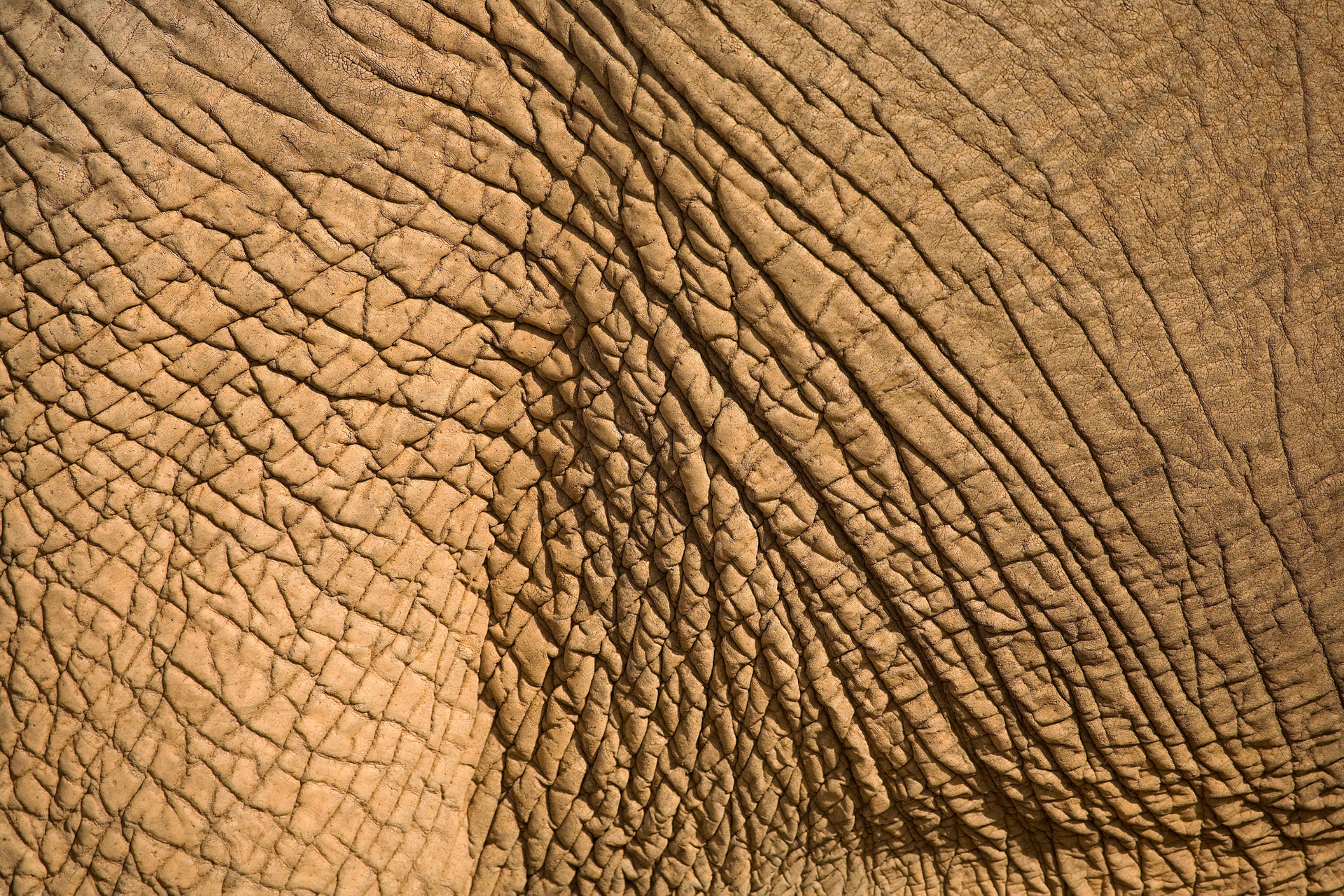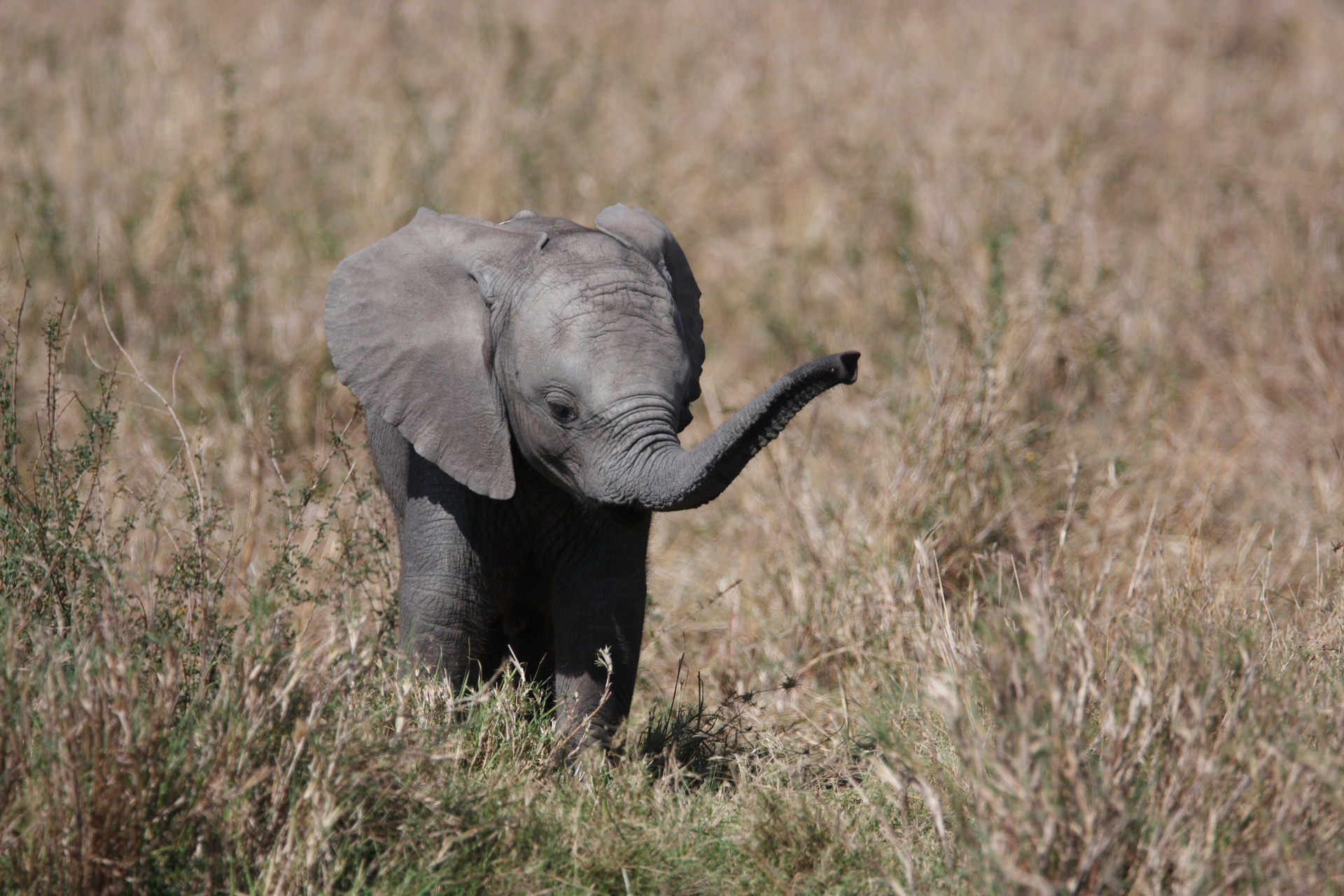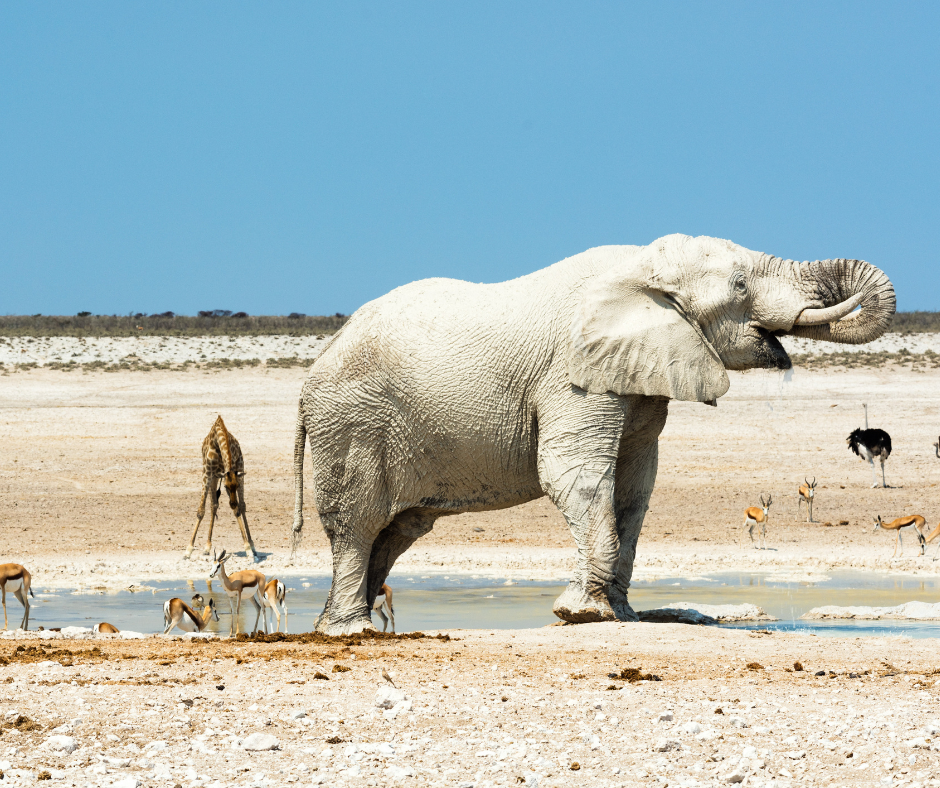11 fun facts about African Elephants
African elephants are more than just the largest land animals on Earth—they’re intelligent, social, and deeply fascinating creatures with behaviours and adaptations that continue to amaze scientists and safari-goers alike.
From their remarkable memory to their ability to communicate through vibrations in the ground, every encounter with these gentle giants reveals something extraordinary. Whether you’re watching a herd move silently through the bush or witnessing playful calves at a watering hole, elephants have a way of capturing hearts and inspiring awe.
In this article, we share 11 surprising and delightful facts about African elephants that will give you a deeper appreciation for these magnificent animals—and make your next safari even more unforgettable.
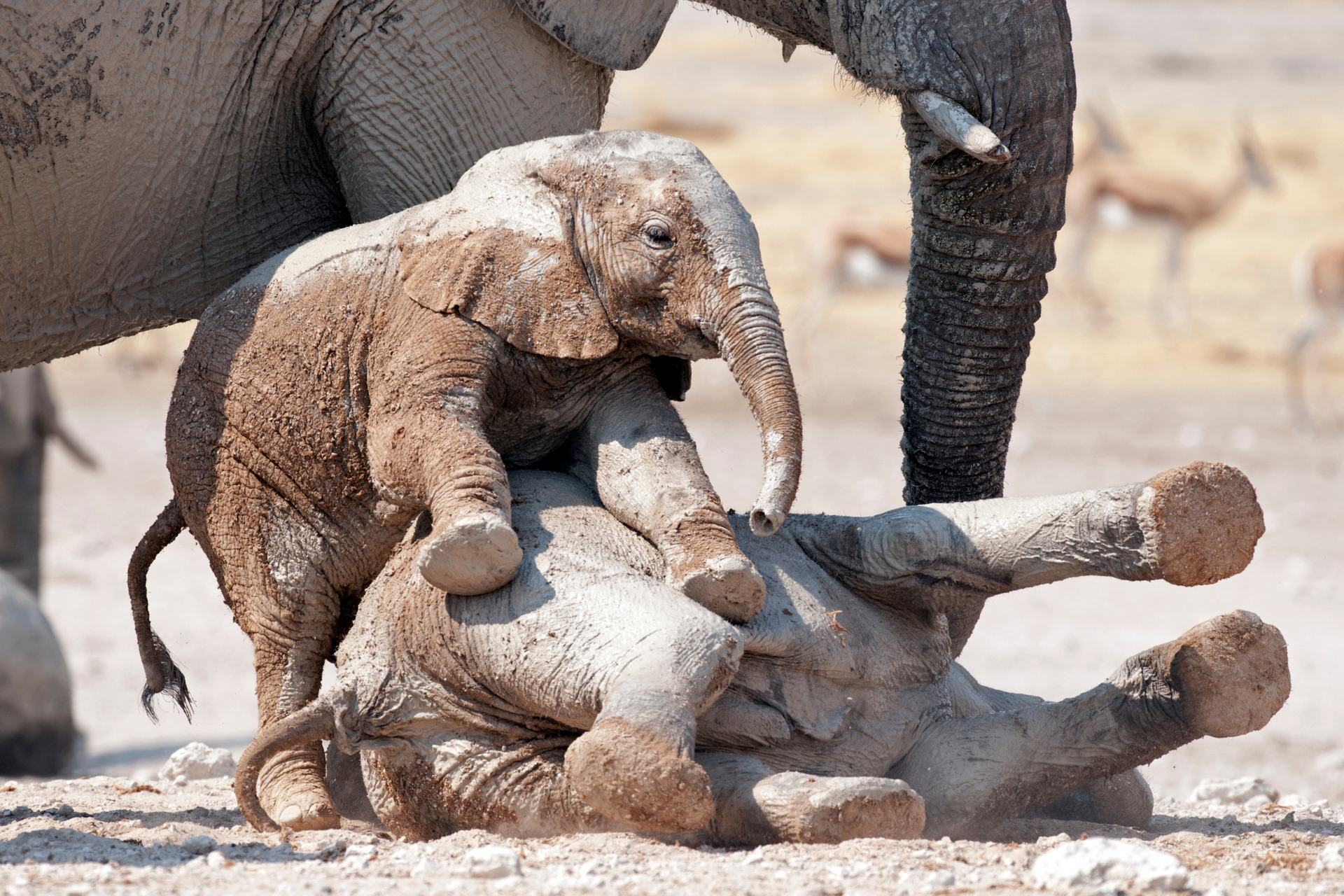
Elephant Essentials: 5 Fascinating Highlights
- Giants of the Earth
Male African elephants can weigh up to 14,000 lb (6,350 kg), making them the largest land animals on the planet. Female elephants are slightly smaller, but still truly immense. - Sleepless Wanderers
Wild African elephants sleep very little—often only around two hours a night in short bursts—and they usually do so standing up, only lying down for brief periods. - Nature’s Air Conditioners
Their massive ears—up to 6.6 feet long and 4 feet wide—help regulate body temperature. Blood circulates through these highly vascularized flaps, cooling it before it returns internally. - Vibrations Tell Tales
Elephants communicate not only through low-frequency rumbles but also by sending seismic signals through the ground—allowing messages to travel across miles. - They Know You by Name
Fascinatingly, elephants have been found to recognize and respond to individually specific calls—essentially, they “name” each other using unique low rumbles.
Elephants are one of the most magnificent and fascinating animals in the world. They are the largest land animals on earth, and they possess incredible intelligence, emotions, and social behaviour. There are two types of elephants in the world - African elephants and Asian elephants. African elephants are the largest and most iconic, and they are native to 37 countries in Africa. Here are 11 fun facts about African elephants that you may not have known:
1. African elephants are the largest land animals in the world, weighing up to 14,000 pounds.
Adult male African elephants can weigh up to 14,000 pounds (6,350 kg), while females are slightly smaller, weighing up to 7,700 pounds (3,500 kg). This makes them the largest land animals in the world. Their size is a result of their herbivorous diet and their need to support their massive bodies.
2. African Elephants have long, curved tusks that can grow up to 10 feet long.
Elephants have long, curved tusks that are actually elongated incisor teeth. African elephants have tusks that can grow up to 10 feet (3 meters) in length, and they use them for a variety of purposes, such as digging for water, stripping bark from trees, and foraging for food. Unfortunately, ivory from these tusks is highly valued on the black market, and as a result, elephants are often hunted for their tusks, leading to a decline in their population.
3. Elephants have thick skin that can be up to 1 inch thick in some places.
Elephants have thick skin that can be up to 1 inch (2.5 cm) thick in some places, such as around their backs and sides. This thick skin provides protection against predators and the harsh African sun. In addition, elephants have a layer of fat under their skin that helps to regulate their body temperature and keeps them warm in colder temperatures.
4. African elephants can live up to 70 years in the wild
Although the average lifespan is typically around 60 years. This long lifespan is due in part to their large size and low natural predator count, as well as their ability to adapt to a variety of different habitats. However, elephants face many threats in the wild, including habitat loss, poaching, and conflict with humans, which can significantly impact their lifespan and overall population.
5.Elephants are highly social animals and are known to live in family groups
Elephants are highly social animals and are known to live in family groups led by a matriarch, which is usually the oldest and most experienced female elephant in the group. The family group typically consists of the matriarch's female offspring and their young, and can range in size from a few individuals to several dozen. Male elephants generally leave their family group once they reach puberty and may live alone or in bachelor groups. Elephants are known for their strong social bonds and can often be seen touching trunks or "hugging" each other as a form of greeting or bonding.
6. Elephants have a highly developed sense of smell and can detect water sources from miles away
They use their sense of smell to find food, detect predators, and locate water sources in their environment. Elephants have a keen sense of smell due to their large olfactory bulb, which is the part of the brain that processes smell information. In fact, their sense of smell is so good that they can detect water sources underground and can communicate with other elephants over long distances using scent signals.
7. African Elephants communicate with each other using a variety of sounds, including trumpeting, grunting, and rumbling
Trumpeting is the most well-known sound, which is a loud, trumpeting call that elephants make when they are excited or agitated. Grunts are softer vocalizations that elephants use to communicate with each other in close proximity. Rumbles are low-frequency sounds that elephants use to communicate over long distances, and can even be felt by other elephants through the ground. In addition to vocalizations, elephants also communicate using body language, such as ear flapping, trunk swinging, and tail wagging.
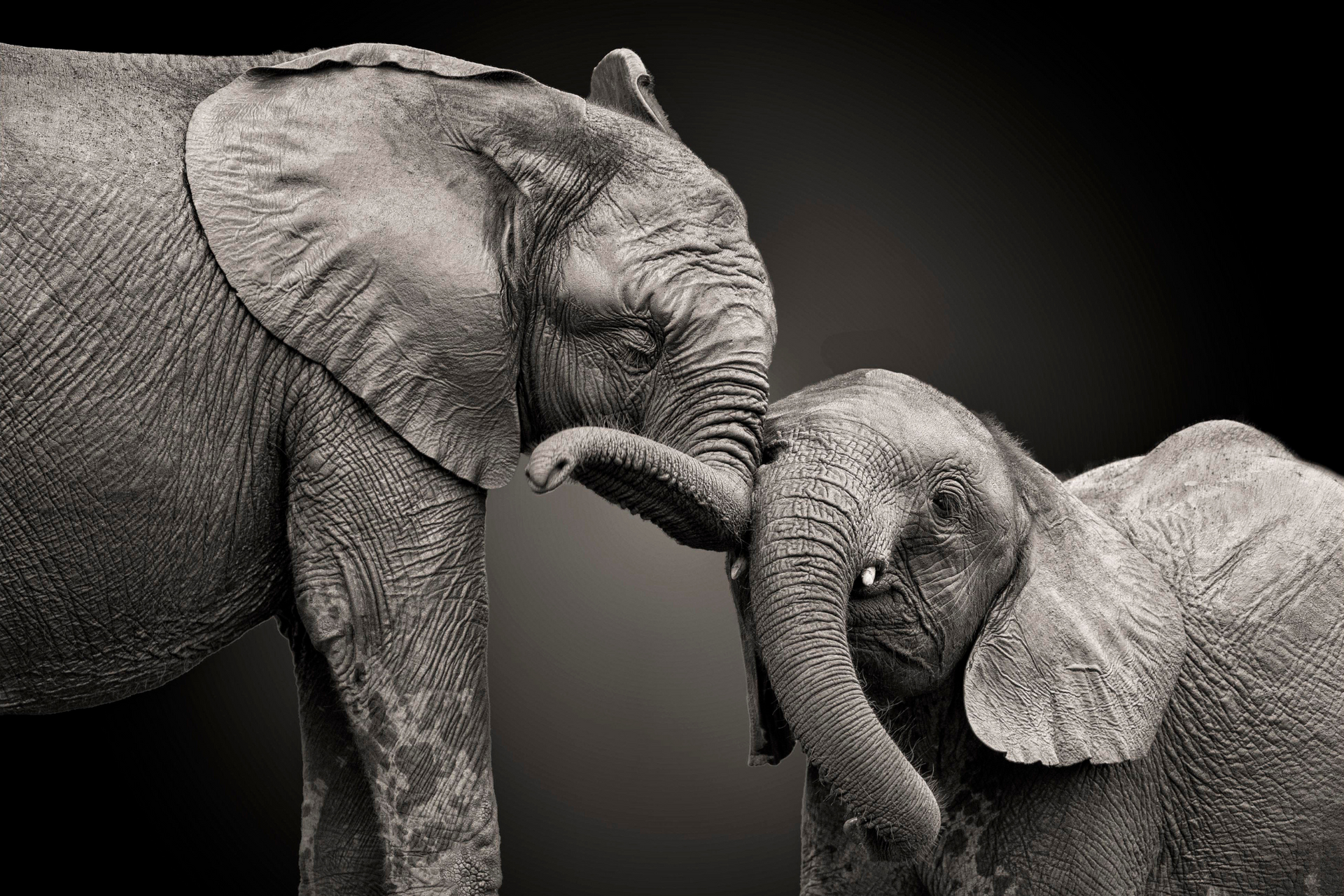
8. They have excellent memories and can remember other elephants and places for many years
They can recognize other elephants that they have not seen for many years and remember specific places where they have found food, water, or shelter. This long-term memory is thought to be an adaptation to their nomadic lifestyle, as they need to be able to remember where resources are located over long distances and varying seasons. In addition, elephants have been observed mourning the loss of their herd members, indicating that they have an emotional memory as well.
9. They are herbivores and can eat up to 300 pounds of vegetation in a single day...
which means they only eat vegetation, such as grasses, leaves, bark, and fruit. They have a high metabolism and need to eat a lot of food to sustain their massive bodies. In fact, elephants can eat up to 300 pounds (136 kg) of vegetation in a single day! They use their long trunks to grasp and tear off vegetation, and then use their powerful jaws to grind it down before swallowing. Elephants also need to drink large amounts of water, up to 50 gallons (190 liters) per day, to stay hydrated in the hot African climate.
10. Elephants are great swimmers and can use their trunks as snorkels while swimming
They can swim for long distances and are often found in bodies of water such as rivers, lakes, and watering holes. Elephants can also use their trunks as a snorkel to breathe while swimming in deep water. While elephants are excellent swimmers, they are also heavy, and it can be difficult for them to float for extended periods, so they often need to rest or rely on their trunks for support. Despite their large size, elephants are also surprisingly agile swimmers and can swim at a speed of up to 6 miles per hour (9.7 km/h).
11. They have a unique way of greeting each other by touching trunks
This behavior is known as trunk-to-trunk greetings and is a way for elephants to show affection, bond with each other, and communicate. When elephants meet, they often touch trunks, and sometimes wrap them around each other in a behavior known as "trunk-hugging". This physical contact allows them to smell each other's breath, which provides information about each other's health and reproductive status. It also allows them to communicate through touch and vibration, as they can feel the low-frequency rumble of the other elephant's vocal cords through their trunks.
Step into the world of Africa’s gentle giants. Join Martin Meyer Safaris for an unforgettable journey to see elephants in their natural habitat—up close, ethically, and with expert guidance. Your adventure starts here
Contact Us
Have you always dreamed of going on safari but don't know where to start ?
We offer a complimentary 1 hour safari consultation call to simplify the process.




